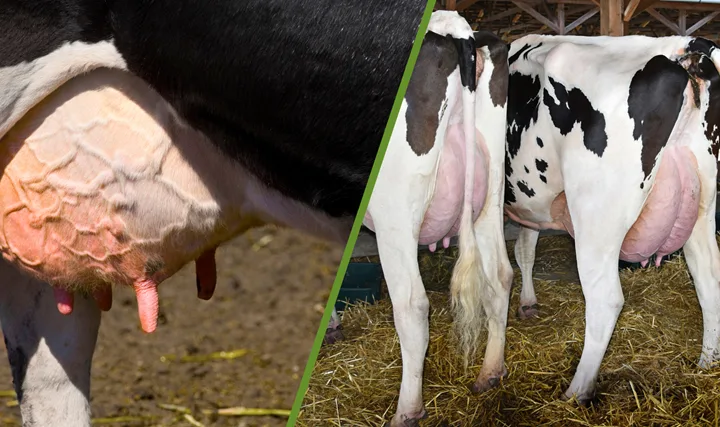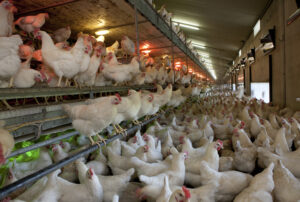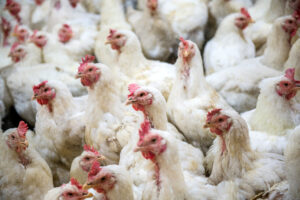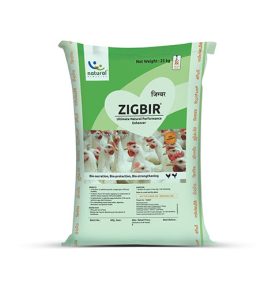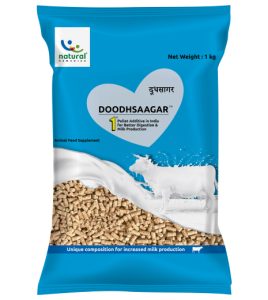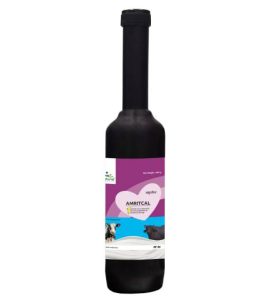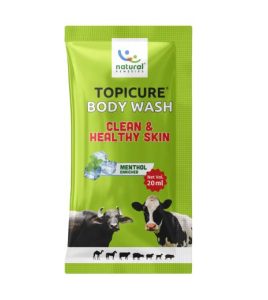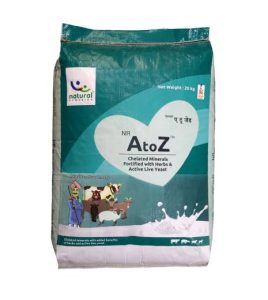What is Mastitis in Cows?
Bovine mastitis, an inflammation of the mammary gland, is the most common disease of dairy cattle that not only degrades the quality of milk but reduces the quantity as well. In the majority of cases, it occurs when microorganisms penetrate the teat through the teat canal.
Most of the clinically mastitic lesions found in the cow are caused by a variety of streptococci (and other similar gram-positive cocci), staphylococcal, and gram-negative lactose fermenting bacteria which easily invade the digestive systems of animals and are identified as coliforms.
In this blog, we will be covering everything about mastitis in cows from its types to its environmental impact. So let’s begin with the very first question that arises…
What are the Symptoms of Mastitis in Cows?
When mastitis strikes, the cow faces many challenges, with some symptoms being visible and some invisible/hidden. Among all those visible symptoms of mastitis in cows, one notable is lethargy. Affected cattle often become lethargic. This lethargy is due to the pain and discomfort (swelling, heat, redness, etc.) caused by the inflammation in the mammary gland.
Moreover, other symptoms include a lack of appetite, sunken eyes, digestive disorders, etc. Farmers also observe that the milk from the affected area becomes watery, thick, or clotted. It sometimes contains pus or blood as well. A foul odor can also be detected, further indicating the severity of the condition. These visible changes in milk composition are usually the first symptoms of mastitis in cows farmers detect.
In many cases, the cow’s body temperature also increases, signaling an ongoing infection. The swollen udder may hinder mobility, making it challenging for the cow to move comfortably. Hence, it is important for farmers to detect it early and take timely actions for healthy and productive cows.
Types of Mastitis in Cows
There are considered to be two basic types of mastitis in cows; clinical and subclinical.
Clinical Mastitis:
When clinical mastitis occurs, its visible signs are usually easy to recognize, which further makes it easier to diagnose and treat faster. It’s divided into mild, moderate, and severe according to the degree of sickness.
- Mild Cases: In mild cases, changes are seen only in the milk and not in the cow’s health. Like clogged milk or its watery appearance, etc.
- Moderate Cases: Moderate clinical mastitis, on the other hand, affects both the udder and the cow’s general health. The discomfort is accompanied by clinical signs that indicate the presence of disease or decreased milk production. The udder becomes engorged, and the animal may develop milk retention.
- Severe Cases: Severe clinical mastitis is a red alert. In fact in this case, cows may develop systemic symptoms, including high fever, rapid heart rate, and dehydration. They may stop eating and become visibly weak.
Subclinical Mastitis
As far as subclinical mastitis in cows is concerned, this is a form of the disease which is not often noticed but has a high prevalence. Cows with subclinical mastitis may still produce milk, but the infection affects its quality and long-term health. Unlike its clinical counterpart, it does not display apparent clinical signs, nonetheless, it results in considerable loss in both volume and quality of milk over a period of time. Although the udder looks normal and there are no visible changes in the milk. Bacteria are present within the udder, which contributes to high somatic cell count (SCC) levels in the milk. This lowers the amount of milk produced and its shelf date and processing quality, which diminishes products like cheese and yogurt.
SCC is also one of the experts’ favorite parameters in detecting chronic mastitis because it reflects the immune system response triggered by infection including inflammation and cancer. Subclinical mastitis is identified when milk contains more than 200,000 cells per milliliter. While it might not be visible as clinical mastitis, but it can lead to serious issues over the period of time, like decreased milk production, lower milk quality, and the spread of pathogens in the herd, etc. This makes it a silent threat that, if ignored, can have significant financial consequences.
So In this case, the sole question that arises is: How to treat mastitis in cows? Let’s delve into it.
Mastitis in Cows Treatment
If a farmer notices mastitis symptoms, then there are some effective mastitis in cows treatment options available. Clinical mastitis needs instant attention by vets so that the problem won’t spread from one cow to the surrounding cows. Until farmers can get medical help for their cattle, here are some ways they can treat their cattle to stop the spread.
- Apply ice packs to the udder to reduce swelling
- Milking should be done three times a day and infected milk taken out from the affected teat should be disposed of hygienically using 5% phenol
- Always milk healthy cows first, and then the infected ones
- Consider drying up the infected area in severe cases
- Prevent calves from suckling on the infected teat
Furthermore, in most situations, some cases’ milder forms are treated with intramammary antibiotics and anti-inflammatory medications. Systemic antibiotics may be necessary in the cases of moderate and severe mastitis and in the most severe instances, intravenous fluids and intensive care are important to avoid the systemic spread of infection (septicemia). Lastly, Remember, timely action can make a significant difference in your approach to Mastitis in cows treatment.
Causes of Mastitis in Cows
To gain a deeper understanding about mastitis in cows, it is important to get into its root. That means how it causes. Bacterial infection of the teat canal is the main cause of mastitis, but there also are exogenic factors like physical, chemical, or heat trauma related to udder tissue. Pathogenic microorganisms, such as staphylococcus aureus, streptococcus uberis, and escherichia coli, are found inside the cow’s udder through the octal canal, where they proliferate and lead to inflammation.
Dirty and unsanitary working conditions in the barn or milking area, including wet bedding and dirty lack of dry milking equipment have also been cited as a case of mastitis as it provides a conducive environment for the harmful bacteria. Similarly, cows with low immune states, due to inadequate feeding or any sort of stress, are prone to this disease in the first place. This is even truer for cows when they are in early lactation and their normal defense mechanisms are lower.
So to tackle this, it is important to prevent mastitis from occurring. There are several strategies to prevent it. Let’s explore those.
How can we prevent Mastitis in Cows?
Here are some strategies through which mastitis in cows can be prevented:
- Good Milking Hygiene and Proper Nutrition:
To prevent bacterial spread and udder damage, it is important to ensure that udders and teat ends are cleaned before and after milking, as well as properly maintain milking equipment. Additionally, a balanced feed, rich in essential nutrients, especially Selenium and Vitamin E, strengthens the cow’s immune system, which further reduces the risk of infection
- Bedding Management:
These are practices that lessen the load of bacteria present in the surroundings. Dusting the bedding materials frequently and disinfecting the barn are good practices
- Dry Cow Therapy:
Utilizing antibiotics on giving birth to heifers or in dry cows does contain the bacteria that can get established in the udder and cause infections. This becomes an essential preventive measure that guarantees that the cows will be free of any infections once they begin the subsequent lactation cycle
- Culling Chronic Cases:
Some cows suffer from mastitis for a long time and cause harm to the rest of the herd whenever they are present in the herd. In such instances, especially when herds are involved, it will be crucial to calm down these cows to help increase herd health.
- The most important management practice aimed at controlling the spread of any infectious agents and new infections is the timely use of an appropriate germicidal teat dip after milking. In subclinical cases, these post-milking germicide dips (used as dips, not sprays) can further reduce bacterial transmission
- Using individual towels and gloves, milking germicide, and timing unit attachment (60–120 seconds after stimulation) ensures optimal hygiene
Let’s See Mastitis Impact on Climate:
Mastitis in dairy cows, especially in subclinical cases, has a hidden but significant impact on greenhouse gas (GHG) emissions.
When cows suffer from mastitis, their milk production drops, and the quality of milk declines, which leads to more waste and higher antibiotic use. This disease also increases the somatic cell count (SCC) in milk, which affects both yield and composition. As a result, farmers need to feed the cows more, replace them more often with other healthy cows or extend lactation to meet demand. It increases carbon emissions from dairying and internalizes external costs of production.
Now we know that Mastitis in cows is a complex issue that touches on animal health, milk yield, financial gain, and perhaps climate change. Therefore, it’s essential to understand its causes, symptoms, and types to gain control over it. By focusing on prevention through hygiene, proper nutrition, and timely treatments like dry cow therapy, farmers can reduce the risk of mastitis. In doing so, they not only improve herd health and productivity but also help make dairy farming more sustainable by cutting down on the overall impact associated with managing this disease.
Read More:

